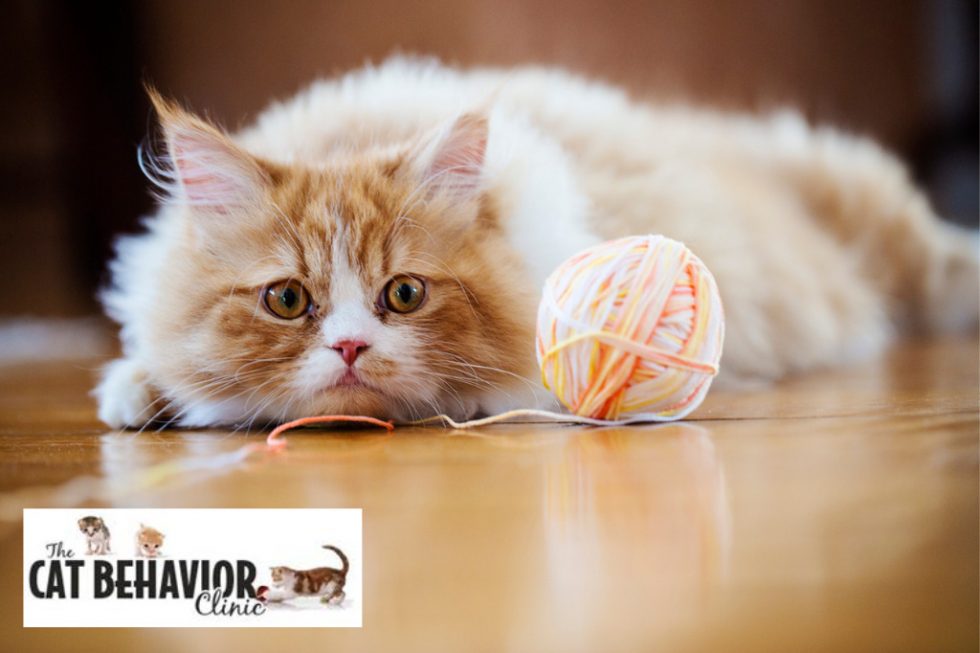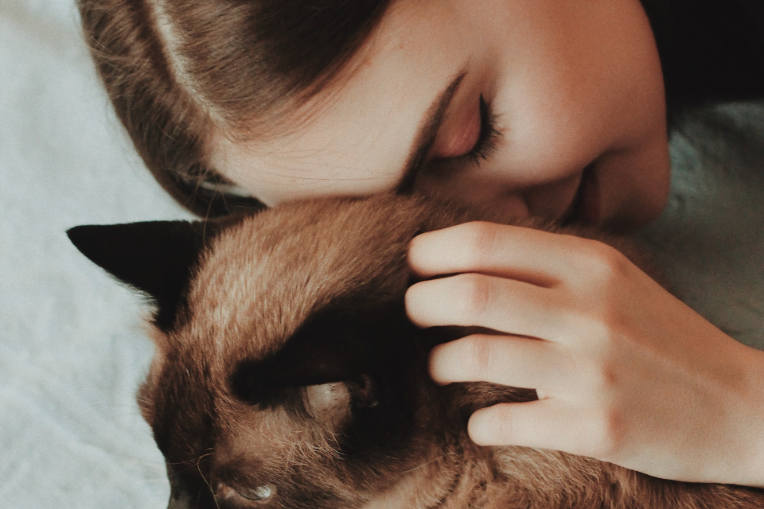Cat Compulsive Disorders Doctor and Cat Behaviorist
Behavior Clinic
Schedule with Cat Behaviorist and New York Times Acclaimed Feline Behavior Science Author, Mieshelle Nagelschneider.
Cat Compulsive Disorders
Our Veterinarians and Oxford-trained Cat Behaviorist Provide Effective Behavior Plans for Feline Compulsive Behavior.
Pica Testimonial “Our cat Pip hasn’t chewed on or eaten any clothing items or toilet paper for 3 weeks. This is literally a miracle, you have no idea. He seems so much happier and content and this all makes sense now after speaking with you. We can’t thank you enough for all your wisdom and for literally saving our cat’s life. Pip can NOT have another exploratory surgery! Talk to you in a few weeks on Skype after we return from our vacation.” — Katherine D. Fairfax, Virginia. 350 solved case studies and client testimonials.
Applying the Sciences of Genetics, Animal Psychology, Biology, Physiology, and Feline Learning and Memory are Crucial for Long Term Behavior Change.
Feline compulsive disorders are solvable with the right help. First off, let’s understand that cats are not “obsessive” like humans can be. This term needs to be removed when describing a cat with compulsive behavior issues because it is incorrect. The correct term for cats with issues like chasing or attacking their tails, chewing or ingesting non-food items, or overgrooming, is compulsive disorder.
As the first cats exclusively behavior practice in the United States, the clinic has been solving pica, overgrooming and other cat behavior compulsive disorders (including some forms of excessive vocalization) nationally and internationally since 1999 in over 30 countries. Help your cat with an issue that you probably didn’t realize has turned into a complex one by scheduling a virtual or phone consultation. Contact the clinic at 503-267-8888.

For Over Two Decades the Clinic Has Solved Compulsive Cat Issues in Over 30 Countries Improving the Lives of Cats and Their Owners, Too.

Pica, Overgrooming, and Certain Forms of Excessive Vocalization.
Also, see naturally occurring excessive vocalization here. These can begin as a simple issue, but then manifest into several issues rolled into one with many interdependent variables — anyone for a game of chess?

Just-in Testimonial — “We are so grateful our vet referred us to you for our little Sugar cat. Thank you so much for your supreme expert advice. She is no longer grooming all the fur off of her stomach and is a completely different cat emotionally. We had no idea she was that miserable. We hope this testimonial helps put other cat owners’ minds at ease when it comes to scheduling with you. Everything we read about and tried had no effect (including the years of diet change because we thought it was a food allergy all this time). Life is good and we are so glad we scheduled the phone consult. Many thanks”
Marie S.
Miami, Florida
Compulsive disorders in cats are not among the most common and
require a behaviorist with formal education in animal behavior.
Properly analyzing the behavior is the first step to results.
For a variety of reasons, some of them similar to those that afflict people, cats and other animals can develop behaviors that we categorize as compulsive. The main cause of compulsive behaviors in cats is stress, especially when cats feel highly conflicted by two opposing courses of action. One compulsive behavior is what we call “wool-sucking” or wool-chewing – sucking or chewing on non-food items including not just wool, but cotton, synthetics, paper, and even more surprising materials.
More commonly, cats may groom excessively or pull out their own fur, which is called overgrooming. Or they may attack their own tails or paw at their own faces (as part of “Rolling Skin Syndrome,” or feline hyperesthesia). Some compulsive behaviors appear to be passed on from parent to kitten. Other behaviors may develop because a cat was weaned too early, or because he’s now experiencing anxiety, frustration, separation anxiety, or cognitive conflict.
This is especially true if such conflicts or frustrations recur frequently or persist over an extended period of time, such as when a cat who has separation anxiety is left alone every day with nothing to occupy or entertain him and no companionship, human, feline, or otherwise.
What do I mean by “cognitive conflict”? Your cat is conflicted when she feels the urge to perform two opposing behaviors, such as an urge to greet you and an urge to avoid you for fear of punishment. Or when she wants to run away from another cat and she wants to confront him. Similarly, if you call a dog and he wants to come but can’t tell if you’re angry, his brain may short-circuit and his response may be to start spinning around. You can read more about this in the only scholarly-cited cat behavior book for cat owners published in four languages available to cat owners on Amazon — The Cat Whisperer, published by Random House in 4 languages. The correct context for the term Cat Whisperer means cat behavioral scientist.
A cat gets frustrated for the same reasons you do. He wants to do or have something and he can’t. Maybe he’s indoors, looking out a window, and he wants to attack the cat walking across his territory. Maybe he wants to play, hunt, stalk, kill, eat, but he has nothing to play with or no food. All animals have their characteristic ways of responding to boredom, frustration, and stress. In zoo environments, wolves, foxes, and polar bears may repetitively pace, crib, and self-mutilate, while giraffes sway and big cats pace. Gus, the famously neurotic polar bear at the Central Park Zoo, compulsively swims back and forth. Horses may chew repeatedly or weave as they walk, and pigs will bite their enclosure bars. Cats with separation anxiety (SAS) may grow upset when their owners leave home, and if left alone for too long may overgroom themselves.
Compulsive behaviors in cats, including overgrooming and wool-sucking, are based on behaviors that are already a part of the cat’s natural repertoire, but that have become abnormal because they’re performed repetitively, out of context, with no apparent goal, and sometimes in ways that are destructive, not just to the environment they live in (yours!) but to the cats themselves. If you allow the stressor to continue, the behavior may be triggered by not only low amounts of the original stressor, but by totally unrelated stressors and eventually, no stressor is needed at all for the cat to perform the compulsive behavior.
In short, one cat may develop compulsive behaviors because she’s been weaned too early, another because she’s anxious, and another because of a genetic propensity for, say, chewing on non-food items.

Some compulsive behaviors may be harmful to your cat, and others may damage your property. Watching or listening to still others – lick, lick, pause. lick, lick, pause – may simply feel to you like Chinese water torture. Most cat owners and even most vets are at a loss as to how to intervene effectively to remedy compulsive behaviors. The most common compulsive behaviors are overgrooming and wool-sucking. These are some of the most difficult behavior issues to diagnose and treat, because they can be or act like physical health issues (like food allergies for instance).
Solving this kind of behavior issue takes a very high level of expertise and of all the cat behavior issues, we strongly recommend never attempting to solve it on your own. We have worked with many clients whose cats had various forms of compulsiveness, and with long lasting success. We invite you to book your consultation today in order to give your cat, and you, relief! Dr. Jim Shultz performs in-home consultations locally only.
Excerpt from Mieshelle Nagelschneider’s book, The Cat Whisperer, on Cat Compulsive Issues
FELINE HYPERESTHESIA SYNDROME
Eek! Your cat may seem to see things you can’t, dash around the room for no reason, and even morph from calm to fierce in an instant. Maybe the skin along his spine suddenly ripples, he starts pulling at his own tail, or biting his own leg. Is he possessed? Schizoid? It’s more likely that he suffers from Feline Hyperesthesia Syndrome (FHS), also known as Rolling-Skin Disease. No one knows for sure what causes it, but it can manifest in seizure-like behaviors that may have a neurological basis, or in behaviors similar to the compulsive activities described earlier in this chapter, or in both. Hyperesthesia means, essentially, hyper sensitivity—to any sensory stimuli. I’ve included a discussion of it in this chapter because it is often mistaken for compulsive behaviors, even though its causes, insofar as we understand them, are different.
Here’s what hyperesthesia looks like: One moment a cat will be resting peacefully, when suddenly his skin starts to twitch or ripple. His eyes may become dilated, he may twist himself around to frantically groom or chew at his hind quarters or even attack a region of the lower half of his body, or he may suddenly take off running, as if to get away from himself. Because this condition involves a high degree of skin sensitivity, the excessive self-grooming and -chewing that some cats do in an attempt to find relief can cause hair loss, which is why FHS is sometimes mistaken for overgrooming. A cat with this disorder may appear restless and vocalize excessively or pace back and forth. These cats can also be very sensitive to touch along the back; FHS episodes may actually be triggered by petting a cat in this region.
Remote Phone Consult Testimonial for Compulsive Overgrooming 2020
My husband and I have been preparing for the arrival of our baby and a lot of things have been up and down. Despite all of that! Ginger is doing really well. We have (behavior plan removed) and the (behavior plan removed) has been a savior. Her fur is growing back for sure. And she has been way more social – coming and hanging out with people she doesn’t know as well – which is huge. Thank you so much for reaching out – and we feel we got it from here for Ginger. The session with Mieshelle was so great, and we are hoping with the arrival of the new baby that Ginger will continue to thrive. J. Fenton Sunnyvale, California USA
Previous 2 week update: Yes! The things we implemented were the (behavior advice removed) and the (behavior advice removed). We are noticing that Ginger’s hair is already starting to grow back around her legs and belly. Super excited we haven’t had to use any medication to get her to calm down! J. Fenton — Sunnyvale, California USA
Feline Compulsive Disorder Resources
https://avmajournals.avma.org/doi/abs/10.2460/javma.2002.221.1445?journalCode=javma
American Veterinary Medical Association Compulsive Disorder Tail Chasing:
https://www.avma.org/News/JAVMANews/Pages/080601x.aspx
Cat Pica and Overgrooming are Never Normal:

Our Team Consults with Cat Owners Worldwide from California to Australia
Like most expert cat behaviorists, we are able to achieve full success with you over the phone or by Skype or Zoom video
Frequently Asked Questions
All cat behavior solutions must take into consideration feline instincts and their evolutionary biology. The clinic has exclusive rights to Mieshelle Nagelschneider’s proprietary Cat Whisperer™ consulting, easy-to-implement C.A.T. Plan™ positive behavior modification, the most effective, comprehensive, and up-to-date system for curing any cat behavior problem.
Because every cat and environment is different, the plan allows for customized behavior techniques and environmental changes when needed – because cat behavior is not one-size-fits-all. Mieshelle has spent 20 years developing a method so effective that when clients follow it, their success rate is well over 90% (even higher for the most common issues).
Her science-based cat behavior book, The Cat Whisperer, has been featured in the New York Times and a best-seller on Amazon and published in 4 languages (Random House Publishing with co-writer Cameron Powell).
For cat behaviorists seeking certification, her book is a required curriculum by a number of cat behaviorist certifying organizations.
Love is born of mystery, and our cats are mysterious and loved in equal measure. But sometimes the greatest blessing of all is a bit of light thrown into a dark place. Mieshelle Nagelschneider holds that light. Allow her to share it with you.”– Gwen Cooper Author, Homer’s Odyssey: A Fearless Feline Tale, of Life With a Blind Wonder Cat (Random House), New York, NY
Veterinarian: “Over the course of many years, Mieshelle has developed and refined her unique ability to think like a cat. On numerous occasions I have witnessed the life-changing benefits Mieshelle’s techniques can bring to cats and their sometimes very frustrated owners.” – Veterinarian, Dr. James R. Shultz DVM, Portland, Oregon
Cat Behavior Veterinarian Referral from Dr. Lisa Berger DVM: “Despite all the disruptions, there have been no incidents of urination on the bed or the couch, and neither have been covered by plastic all week!” – Juanita H. Portland, Oregon
You have the African wildcat, your domestic cat’s ancestor, to thank for many of your cat’s “unwanted” cat behaviors. Learn more about this during your consultation to better understand and help your cat and solve its behavior issues. We often misunderstand cat behaviors. Once cat owners understand their cat instincts and biology, they can better understand why the behavior strategies work so well and can better apply them.
Mieshelle The Cat Whisperer™ has been the spokesperson and cat behavior expert for Comfort Zone, Arm & Hammer Cat Litter, and Cat Expert for Whiska’s International Media Tour Australia. Her cat behavior expertise is seen in the New York Times, The Today Show, NBC Dateline, MTV, Animal Planet, National Geographic, Discovery Channel, The Hallmark Channel, Modern Cat Magazine, Parade, Reader’s Digest, Cat Fancy Magazine, The New York Post, The Boston Globe, USA Today, This Wild Life, The Divine Cat, Real Simple Magazine, Salon.com, Petside, Freekibblekat, The Toronto Star, Canada Globe and Mail, Animal Rescue Site, The Daily Cat, Feline Wellness Magazine, Advisory Council Pet360.com, This Wild Life, The Cat Channel, Pets Magazine, The Circle, New Republic, The Sunrise Show, Yahoo.com, Herald Sun, Toronto Star, and countless others. See our Media Room below for the latest.
Feline behavior therapy is very different from canine behavior therapy and the approach to changing a cat’s behavior is even more unique. Cats do not display obedience problems like dogs. The help you need is not focused on physical or verbal behavior modification strategies, like dog training with a dog trainer present. All cat behaviorists conduct consultations by phone or video via Skype. Our behavior plans are specific to cats and still allow for the natural feline instincts, but when and where you want them displayed. We will cover the behavior plan during the phone or video consultation and offer follow-up over the course of several weeks for all of our consultation programs.
Call The Clinic Today at 503-267-8888


